Tourism in Morocco
Top 20 Cities and Key Attractions
Morocco, a crossroads of cultures, continents, and empires, is known for its breathtaking landscapes, rich history, and vibrant culture. From the bustling medinas of ancient cities to the serene Sahara Desert, Morocco has a vast array of experiences to offer. Below is a detailed exploration of the country’s 20 most important cities and attractions, with insights into their history, landmarks, how to get there, accommodation, and dining options.1. Marrakech
- Attractions:
- Jemaa el-Fnaa: A lively public square known for street performances, markets, and local foods.
- Koutoubia Mosque: The largest mosque in Marrakech, built in the 12th century, notable for its 70-meter-high minaret.
- Majorelle Garden: A botanical garden created by the French painter Jacques Majorelle, later owned by Yves Saint Laurent.
History: Founded in 1070 by the Almoravids, Marrakech was once the capital of the Berber Empire. Its medina is a UNESCO World Heritage site.- How to Get There: Marrakech Menara Airport has international flights. The train from Casablanca takes about 3 hours.
- Accommodation:
- Luxury: La Mamounia is a legendary palace hotel with grand Moroccan architecture and expansive gardens.
- Budget: Riad Jona offers affordable yet authentic riad accommodation.
- Dining:
2. Casablanca
- History: Casablanca rose to prominence during the French protectorate (1912-1956), becoming Morocco’s economic hub.
- How to Get There: Flights arrive at Mohammed V International Airport. The train from Rabat or Marrakech is a popular option.
- Accommodation:
- Luxury: Four Seasons Casablanca overlooks the ocean, offering high-end amenities.
- Budget: Hotel Ibis is a reliable, affordable option in the city center.
- Dining:
- Rick’s Café (inspired by the movie Casablanca).
- La Sqala (Moroccan and Mediterranean dishes in a historical setting).
3. Fez
- Al-Qarawiyyin University: Founded in 859, it is considered the oldest continuously operating university in the world.
- Fez el-Bali: The world’s largest car-free urban area and a UNESCO World Heritage site.
- Bou Inania Madrasa: A 14th-century religious school renowned for its exquisite tile work.
- Al-Qarawiyyin University: Founded in 859, it is considered the oldest continuously operating university in the world.
- History: Fez was founded in 789 by Idris I and became a major center of learning and trade.
- How to Get There: Fez Saïss Airport connects to several European cities. There’s also a train from Casablanca or Rabat.
- Accommodation:
- Luxury: Palais Faraj offers five-star luxury in a former palace.
- Budget: Riad Verus provides affordable, traditional lodging.
- Dining:
- Dar Roumana (elegant Moroccan dining in a historic setting).
- Café Clock (casual dining with both Moroccan and international options).
4. Chefchaouen
- The Blue City: Famous for its blue-painted streets and buildings, Chefchaouen is a photographer’s dream.
- Ras El Maa Waterfall: A small waterfall on the outskirts of the medina, offering a peaceful retreat.
- Kasbah Museum: This 15th-century fortress houses artifacts and exhibitions on local history.
- The Blue City: Famous for its blue-painted streets and buildings, Chefchaouen is a photographer’s dream.
- History: Founded in 1471 as a refuge for the Moors and Jews expelled from Spain, Chefchaouen maintains a strong Andalusian influence.
- How to Get There: The town is a two-hour drive from Tangier, accessible by bus or car.
- Accommodation:
- Luxury: Lina Ryad & Spa offers panoramic views and spa facilities.
- Budget: Casa Perleta is a charming, budget-friendly riad.
- Dining:
- Café Aladdin (traditional Moroccan food).
- Bab Ssour (affordable meals with local ingredients).
5. Tangier
- Kasbah: Offering sweeping views of the Strait of Gibraltar, the Kasbah also houses a museum with Roman and Phoenician artifacts.
- American Legation: The only U.S. National Historic Landmark outside of the United States.
- Cap Spartel: Where the Atlantic Ocean meets the Mediterranean Sea.
- History: Tangier has long been a crossroads of civilizations, attracting international artists and writers in the 20th century, such as Paul Bowles and Tennessee Williams.
- How to Get There: Flights arrive at Tangier Ibn Battouta Airport, and ferries from Spain dock at the port.
- Accommodation:
- Luxury: Hotel El Minzah is a historic hotel frequented by celebrities.
- Budget: Hotel Mamora offers good value near the medina.
- Dining:
- El Morocco Club (gourmet cuisine in an upscale setting).
- Café Hafa (casual dining with sea views, a favorite of musicians and writers).
6. Rabat
- Attractions:
- Hassan Tower: An incomplete minaret from the 12th century, symbolizing Rabat’s historical ambitions.
- Oudayas Kasbah: A peaceful fortified area offering scenic views of the Bou Regreg River.
- Mausoleum of Mohammed V: The final resting place of the current king's grandfather and father.
- Hassan Tower: An incomplete minaret from the 12th century, symbolizing Rabat’s historical ambitions.
- History: Rabat became the capital of Morocco in 1912 under the French protectorate.
- How to Get There: Rabat-Salé Airport offers international flights. The train from Casablanca takes about 1 hour.
- Accommodation:
- Luxury: Sofitel Rabat Jardin des Roses is a five-star hotel with lush gardens.
- Budget: Riad Zyo offers modern comforts in a traditional setting.
- Dining:
- Dinarjat (refined Moroccan cuisine in a traditional riad).
- Le Dhow (seafood served aboard a boat on the river).
7. Meknes
- Attractions:
- Bab Mansour: The grandest gate in Morocco, built in the 18th century with intricate zellij (tilework) and marble columns.
- Royal Stables: Once home to the royal horses, these massive stables could house up to 12,000 horses.
- Mausoleum of Moulay Ismail: The resting place of one of Morocco’s most powerful sultans, who made Meknes his capital in the 17th century.
- Bab Mansour: The grandest gate in Morocco, built in the 18th century with intricate zellij (tilework) and marble columns.
- History: Meknes was built by Sultan Moulay Ismail in the 1600s as a showcase of his power, featuring grand palaces and fortifications.
- How to Get There: By train from Fez or Rabat (about 45 minutes from Fez).
- Accommodation:
- Luxury: Riad Yacout offers Moroccan luxury in the heart of the medina.
- Budget: Hotel Transatlantique offers basic but comfortable lodging.
- Dining:
- Collier de la Colombe (elegant dining with local and international cuisine).
- Riad Ma Boheme (affordable and casual with a bohemian vibe).
8. Essaouira
- Attractions:
- Essaouira Medina: A UNESCO World Heritage site known for its 18th-century European-style architecture and fortified walls.
- Skala de la Ville: A seaside fort offering panoramic views of the Atlantic.
- Essaouira Beach: Popular for windsurfing, kite surfing, and laid-back seaside vibes.
- Essaouira Medina: A UNESCO World Heritage site known for its 18th-century European-style architecture and fortified walls.
- History: Originally a Portuguese settlement, Essaouira became an important trading port connecting Europe and Africa.
- How to Get There: Essaouira-Mogador Airport connects to several cities, or take a 3-hour bus from Marrakech.
- Accommodation:
- Luxury: Heure Bleue Palais is a five-star hotel housed in a former palace.
- Budget: Riad Watier offers affordable and charming riad accommodation.
- Dining:
- La Table by Madada (upscale Moroccan and French fusion).
- Il Mare (seafood and Mediterranean cuisine with ocean views).
9. Agadir
- Attractions:
- Agadir Beach: A long sandy beach perfect for relaxation and water sports.
- Souk El Had: One of the largest markets in the region, offering everything from spices to textiles.
- Agadir Oufella (Kasbah): A hilltop fortress offering panoramic views of the city and bay.
- Agadir Beach: A long sandy beach perfect for relaxation and water sports.
- History: After being destroyed by an earthquake in 1960, Agadir was completely rebuilt as a modern city, making it a top beach destination in Morocco.
- How to Get There: Al Massira Airport serves international flights. Buses from Marrakech take about 3 hours.
- Luxury: Sofitel Agadir Thalassa offers beachfront luxury with spa services.
- Budget: Hotel Timoulay is a more affordable option with good amenities.
- Dining:
- Pure Passion (seafood and international dishes).
- Le Jardin d’Eau (Moroccan and Mediterranean food in a casual setting).
10. Ouarzazate
- Attractions:
- Ait Benhaddou: A UNESCO-listed ksar (fortified village) that has been featured in films like Gladiator and Game of Thrones.
- Atlas Film Studios: Known as “Hollywood of Morocco,” these studios have been the filming location for numerous international productions.
- Kasbah Taourirt: A historic palace offering a glimpse into Berber architecture.
History: Ouarzazate is often referred to as the “Gateway to the Sahara,” with its strategic location making it a stopover for desert expeditions.- How to Get There: Flights to Ouarzazate Airport, or a 4-hour drive from Marrakech through the scenic Atlas Mountains.
- Accommodation:
- Luxury: Le Berbere Palace is a high-end hotel often used by film crews and celebrities.
- Budget: Dar Rita is a traditional guesthouse with affordable rates.
- Dining:
- Relais Saint-Exupéry (French and international cuisine).
- Chez Dimitri (traditional Moroccan and Mediterranean food).
11. Ifrane
- Attractions:
- Michlifen Ski Resort: A popular ski destination during the winter months, offering slopes for all levels.
- Dayet Aoua Lake: A beautiful, tranquil lake surrounded by cedar forests, ideal for picnics and walks.
- History: Known as “Little Switzerland” for its Alpine-style architecture, Ifrane was developed by the French during the colonial period.
- How to Get There: Located about 1 hour from Fez by car.
- Accommodation:
- Luxury: Michlifen Resort & Golf is a five-star resort with luxurious amenities.
- Budget: Hotel Les Tilleuls offers a simple but comfortable stay.
- Dining:
- La Paix (upscale Moroccan and international dishes).
- Forest Restaurant (casual dining with local dishes).
12. Merzouga
- Attractions:
- Erg Chebbi Dunes: Some of the largest dunes in Morocco, popular for camel trekking and 4x4 expeditions.
- Merzouga Desert: Known for its beautiful sunrises and sunsets, and as a gateway for Sahara tours.
- History: A small Berber village on the edge of the Sahara Desert, Merzouga is a key location for desert tourism.
- How to Get There: Accessible by bus or car from Rissani (40 minutes) or Erfoud (1 hour). Many tours operate from Marrakech or Fez.
- Luxury: Desert Luxury Camp offers glamorous desert tents with private facilities.
- Budget: Auberge Sahara provides more basic desert accommodation.
- Dining: Most desert camps provide traditional meals, often including tajine and couscous.
13. Tétouan
- Attractions:
- Medina of Tétouan: A UNESCO World Heritage site known for its Andalusian architecture and rich history.
- Archaeological Museum: Displays artifacts from Roman, Phoenician, and Berber periods.
- Medina of Tétouan: A UNESCO World Heritage site known for its Andalusian architecture and rich history.
- History: After the Reconquista, Tétouan became a refuge for expelled Andalusian Muslims and Jews. This heritage is reflected in the town’s architecture and culture.
- How to Get There: Flights to Tétouan Airport or buses from Tangier (1 hour).
- Accommodation:
- Luxury: Hotel Blanco Riad offers high-end accommodation in a historical setting.
- Budget: Riad Dalia is a cozy, budget-friendly option.
- Dining:
- Casa Medina (Moroccan and Mediterranean fusion cuisine).
- Granada Restaurant (affordable local dishes).
14. Zagora
- Attractions:
- Draa Valley: A lush valley of date palms and ancient kasbahs, stretching for over 200 km.
- Tinfou Dunes: The first large dunes travelers encounter when heading into the Sahara Desert.
- History: Zagora has long been a key stop for traders and caravans traveling across the Sahara, famously indicated by the “52 days to Timbuktu” sign.
- How to Get There: About a 3-hour drive from Ouarzazate. Many desert tours operate from Marrakech.
- Accommodation:
- Luxury: Riad Lamane offers a combination of luxury and traditional desert charm.
- Budget: Auberge Restaurant Cafe Sahara provides simple and affordable desert lodgings.
- Dining:
- La Fibule du Draa (fine dining in the desert).
- Simple desert camps offer traditional Moroccan meals.
15. Taza
- Attractions:
- Friouato Caves: A massive cave system that extends for several kilometers, popular for spelunking and exploration.
- Taza National Park: Home to the endangered Barbary macaque and offering hiking trails through the Rif Mountains.
- Friouato Caves: A massive cave system that extends for several kilometers, popular for spelunking and exploration.
- History: Taza has historically been an important military post due to its location between the Rif and Middle Atlas mountain ranges.
- How to Get There: By train or bus from Fez (2 hours).
- Accommodation:
- Luxury: Hotel Tazekka offers more modern accommodations close to natural attractions.
- Budget: Hotel Luiza provides basic, budget-friendly lodging.
- Dining:
- Dar Taza (upscale Moroccan cuisine).
- Small local eateries provide authentic and affordable options in the medina.
16. El Jadida
- Attractions:
- Portuguese Cistern: An underground water cistern with an eerie atmosphere, once part of a Portuguese fort.
- El Jadida Beach: A popular spot for swimming and sunbathing.
- Portuguese Cistern: An underground water cistern with an eerie atmosphere, once part of a Portuguese fort.
- History: El Jadida was once a Portuguese colony known as Mazagan. Its fortified medina is a UNESCO World Heritage site.
- How to Get There: Trains from Casablanca take about 1 hour.
- Accommodation:
- Luxury: Mazagan Beach Resort is a luxury seaside resort offering golf and spa services.
- Budget: Hotel L’Iglesia offers budget-friendly rooms in a converted church.
- Dining:
- L’Ostrea (seafood with ocean views).
- La Portugaise (affordable local dishes).
17. Asilah
- Attractions:
- Medina: Known for its whitewashed buildings and vibrant murals, Asilah’s medina is a blend of Moroccan and European styles.
- Paradise Beach: A quiet beach with golden sand, located a short drive from the town.
- Medina: Known for its whitewashed buildings and vibrant murals, Asilah’s medina is a blend of Moroccan and European styles.
- History: Founded by the Phoenicians, Asilah later became a Portuguese stronghold before falling under Moroccan control.
- How to Get There: A 40-minute train ride from Tangier.
- Accommodation:
- Luxury: Hotel Al Alba offers boutique luxury close to the beach.
- Budget: Riad Assilah is an affordable and charming riad in the heart of the medina.
- Dining:
- Casa Pepe (Spanish cuisine with Moroccan influences).
- Restaurant Oceano Casa Pepe (seafood and Mediterranean dishes).
18. Beni Mellal
- Ain Asserdoun Spring: A beautiful natural spring located near the mountains, perfect for a quiet retreat.
- Kasbah Ras el Ain: A historic fortress offering panoramic views of the town and surrounding countryside.
- Ain Asserdoun Spring: A beautiful natural spring located near the mountains, perfect for a quiet retreat.
- History: Known for its agricultural production, particularly olives and oranges, Beni Mellal has historically been an important trading post.
- How to Get There: A 3-hour bus or car ride from Casablanca.
- Luxury: Hotel Ouzoud offers luxury accommodations with stunning views of the nearby mountains.
- Budget: Hotel Ain Asserdoun provides simple yet comfortable rooms for budget travelers.
- Dining:
- Restaurant Tamda (traditional Moroccan dishes with mountain views).
- Small local eateries provide affordable and authentic meals.
19. Larache
- Attractions:
- Archaeological Site of Lixus: One of the oldest Phoenician settlements in Africa, with Roman ruins and mosaics.
- Medina: A small but charming medina with traditional Andalusian architecture.
- History: Larache has been an important port city since ancient times, with influences from Phoenician, Roman, and Andalusian cultures.
- How to Get There: A 1-hour bus or car ride from Tangier.
- Luxury: Hotel Espana offers historic charm and modern amenities in the city center.
- Budget: Riad Larache is an affordable guesthouse in a traditional Moroccan setting.
- Dining:
- Café Panorama (fresh seafood with ocean views).
- Small local restaurants in the medina offer authentic and affordable meals.
20. Nador
- Attractions:
- Marchica Lagoon: A beautiful lagoon surrounded by mountains, perfect for nature lovers and bird watchers.
- Rif Mountains: Hiking and outdoor activities in the scenic Rif Mountains.
- History: Originally a Berber settlement, Nador has Spanish influences due to its proximity to the Spanish enclave of Melilla.
- How to Get There: Nador International Airport offers flights to and from Spain and Europe. Alternatively, take a ferry from Spain.
- Accommodation:
- Luxury: Mercure Nador Rif offers seaside luxury with modern amenities.
- Budget: Hotel La Giralda is a more affordable option, close to the city center.
- Dining:
- Le Marbella (fine dining with Mediterranean influences).
- Small local cafés near the beach provide affordable meals.
Conclusion:
Morocco is a land of contrasts, offering everything from snow-capped mountains to sweeping deserts, from ancient medinas to modern cities. Each city and region provides a unique glimpse into Morocco’s rich history and culture, making it a diverse and dynamic travel destination.
References:
- Moroccan National Tourist Office
- UNESCO World Heritage Sites
- Lonely Planet Morocco Guide
- TripAdvisor Reviews on Moroccan Cities






.webp)

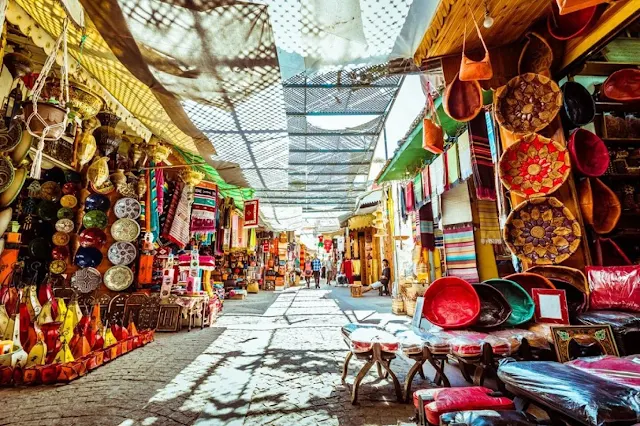














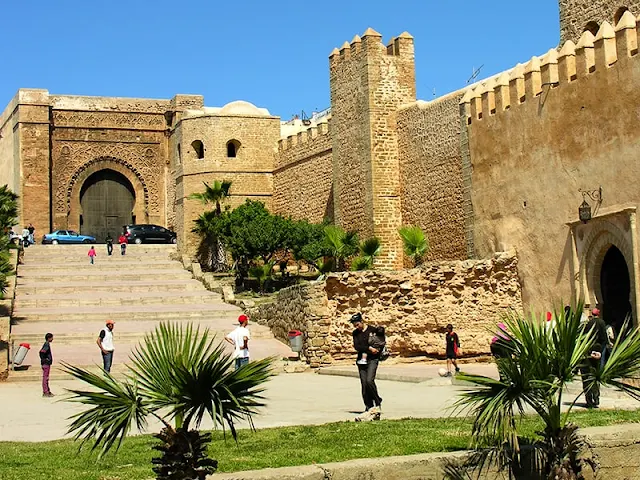


















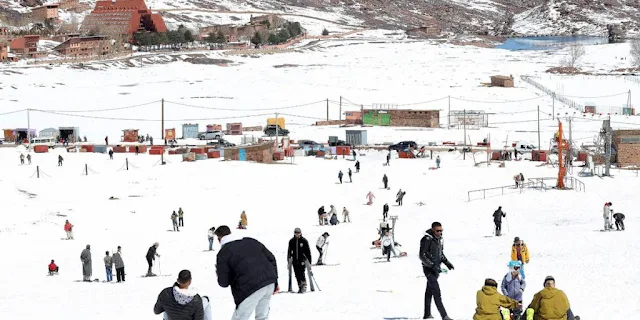


.jpg)



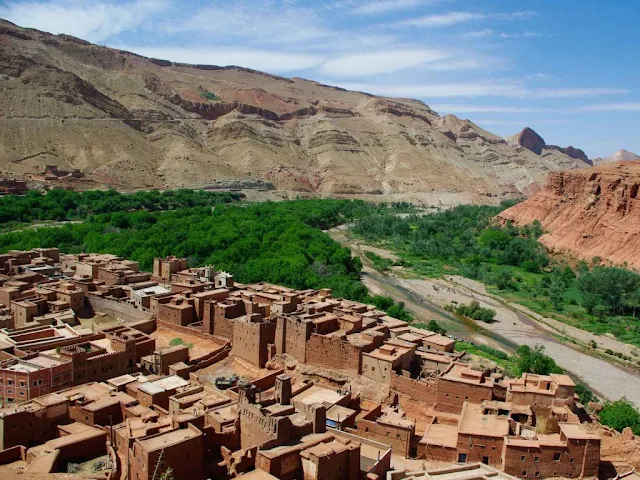

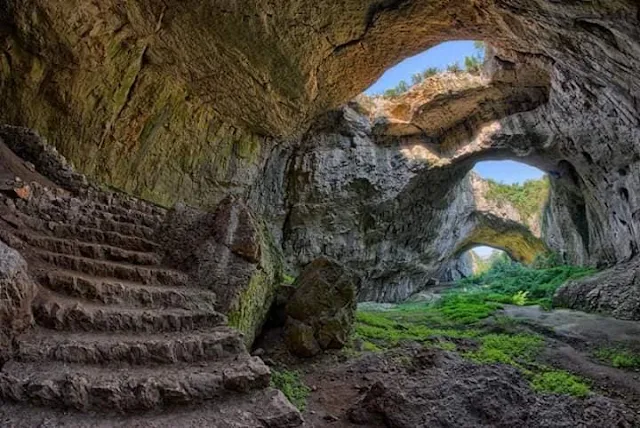
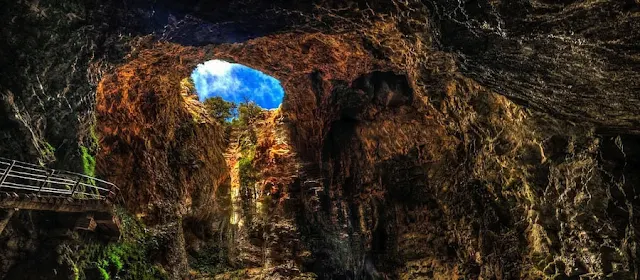







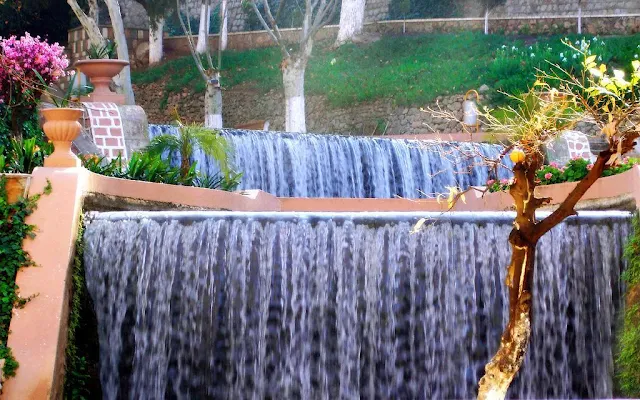





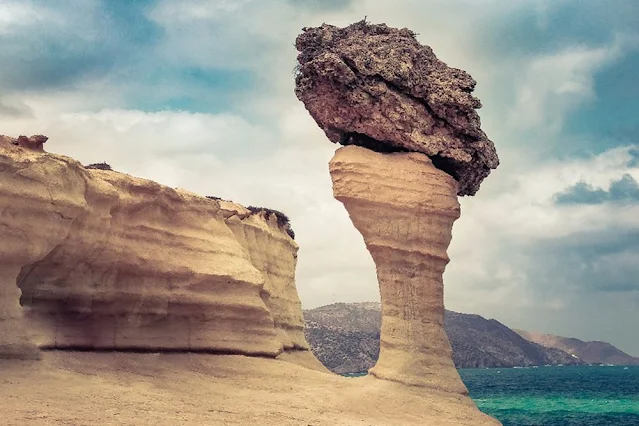
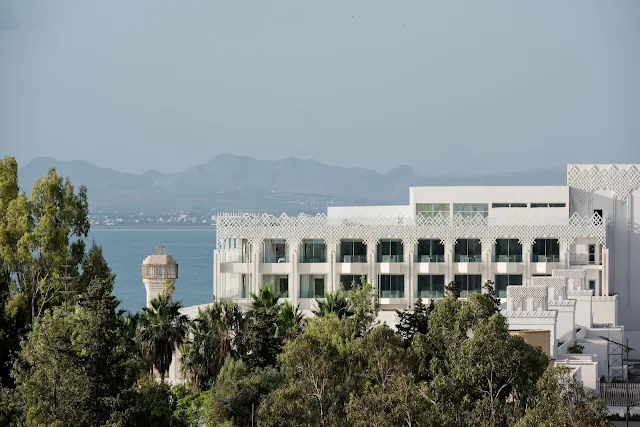

No comments